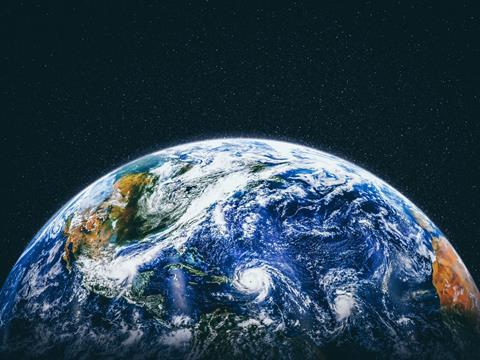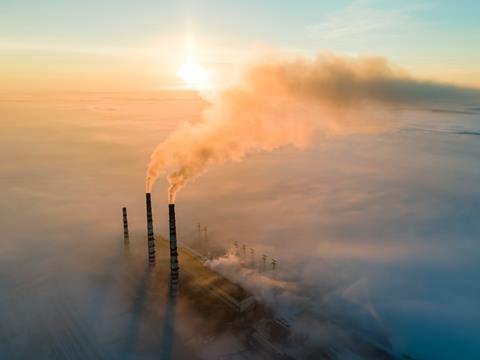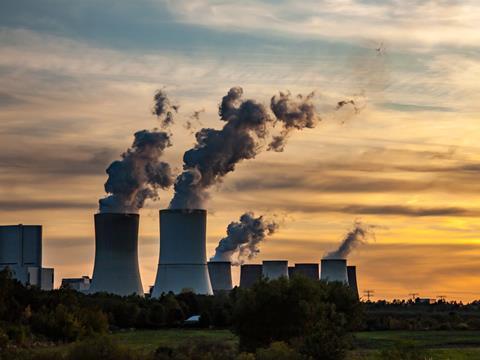
We need more facts, not simply more faith, to move the needle on packaging sustainability. In this article, Robert M. Lilienfeld, executive director at SPRING, unpacks sustainability misconceptions and myths, and gives an introduction into the key forces that contribute to climate change.
Back in 1995, Dr. William J. Rathje and I wrote an Op-Ed piece for The New York Times. Entitled “Six Enviro-Myths”, it laid out and skewered the leading environmental myths of the late Twentieth Century. Today, these myths are still driving the public’s perception both regarding our environmental problems and what needs to be done to mitigate them.
These misconceptions have to do with the value of recycling; the roles of industry and the public in our environmental efforts; and the expanding amount of trash in our waterways, on our beaches, and around our homes. Frankly, our collective perceptions have not changed, which means we are at best no better off today than we were back then.
So, please allow me to take a different, more scientific route to explain the situation and offer some conclusions and suggestions. To do so, we must have a basic understanding of the two forces that drive our economies and generate the related waste that fosters climate change: energy and entropy, and their effects upon the environment.

Energy
Within the tremendous gravitational pressure of the sun, hydrogen is fused into helium. At the most basic level, four hydrogen atoms combine to create one helium atom. The atomic mass of the four hydrogen atoms is 4.0312. The atomic mass of the newly formed helium atom is only 4.0026.
What happened to the 8% of mass that seemingly disappeared during the transition?
The First Law of Thermodynamics tells us that matter and energy cannot be created or destroyed but can change from one form to another. So, the missing 8% of material mass must still exist: It was converted to energy during the fusion process. This is the basic mechanism by which the sun gives off unbelievably massive amounts of heat and radiation that reach the Earth about 8 minutes later as sunlight, gamma rays, and x-rays.
Eight percent of such a tiny amount of mass doesn’t seem like much, does it?
This is where Einstein comes in. Remember the equation e=mc2? As part of his special theory of relativity, it tells us how much energy will be released during the hydrogen-to-helium fusion process. While the mass that was converted into energy isn’t particularly large, multiplying it by the speed of light squared gives us a very, very large number. (The speed of light squared is about 37.4 billion mph.)
On the surface, the equation tells us that matter and energy are equivalent. But at a more fundamental level it points to a far more interesting conclusion - that matter and energy are actually the same thing. They are simply different manifestations of the primal force(s) in the universe.
Conversion to helium is the basis for the explosive force of the thermonuclear (hydrogen) bomb. More importantly, it is also the basis for the nuclear fusion and resulting solar radiation that generates heat and light in our atmosphere and is thus the primary force driving all life on Earth.
In fact, chemically occurring energy sources on Earth owe their existence to this original and rather mind-numbingly old solar energy. Fossil fuel energy comes from the photosynthetic processes used by ancient plants to drive the transformation of CO2, water and nitrogen-based minerals into lignin, cellulose, and other plant matter.
The enormous amount of time and pressure placed on these materials helped transform them into coal, oil, and natural gas, which still contain this anciently created embedded energy. (By the way, as a plant-based energy source, wood is formed by the same photosynthetic processes, but without time and pressure. It is a simpler and less efficient version of coal or oil.)
So, much of the chemical energy we use is based on ancient embedding of solar energy into common forms of matter. Much of this energy is stored in carbon-hydrogen-oxygen bonds. There are two primary types: hydrocarbons, which we use as external fuel sources to generate heat and mechanical motion (e.g., cars, trains, planes); and carbohydrates, which we use as food sources to generate our internal body heat, biological functions, and bodily motion.
Here is a simple example of how our bodies utilize chemical energy:
Plants use photosynthesis to create a variety of simple and complex carbohydrates, of which sugars, especially sucrose, are common. When we eat fruits, vegetables and nuts, our digestive systems catalyze sucrose into energy: Through the addition of one molecule of water (H2O), our bodies use the enzyme sucrase to break down one molecule of sucrose (C12H22O11) into two molecules of glucose (C6H12O6). Glucose is the primary sugar in our bloodstreams, and its embedded energy is used by our bodies to produce ATP, a chemical that powers our cells and is needed to drive all body processes.
As you can now see, the sun is the basis for all solar, most nuclear, and virtually all chemical energy on our planet. Hydroelectric and wind energy are different, as they use mechanical, rather than chemical, processes to turn water and wind movement into electricity. (More on these a bit later.)

Entropy
Five years after you spend hours putting in a beautiful English garden, it becomes a tangle of weeds, grasses and struggling flowers.
You leave your children and pets home alone for an afternoon and return to a disheveled house.
Your cat inadvertently knocks a vase off the end table, and it shatters into a hundred pieces.
The police officer who pulls you over for speeding runs her fingers across your tires and tells you the treads have worn down to the point that the law requires the tires to be replaced.
These events represent the concept of entropy. Simply put, entropy posits that all systems will move from order to disorder. Entropy forms the basis of the 2nd Law of Thermodynamics, which states that hot things always cool unless you do something to stop them. It expresses a fundamental and simple truth about the universe: disorder, characterized as a quantity known as entropy, always increases.
It takes additional effort to offset entropy. In the case of the garden, it means weeding, watering, raking, and replanting — and doing so on a regular basis. It means constantly cleaning up and straightening your home or buying a new vase or new tires to replace broken or worn out items. In reality, entropy always increases, as maintenance or replacement of materials creates its own entropy.
Can entropy be stopped? According to Sir Arthur Eddington, renowned 20th Century astronomer, physicist and mathematician, “The [second] law that entropy always increases, holds, I think, the supreme position among the laws of Nature. … if your theory is found to be against the second law of thermodynamics, I can give you no hope; there is nothing for it but to collapse in deepest humiliation.”
So, the answer is “no”. This is the reason for the concept of “heat death”, at which point the universe comes to a complete standstill and/or collapses, as there is no more heat or energy available to drive the growth of organisms, solar systems, or galaxies.

The environment
If entropy is a form of randomness or disorder, we can also consider it to be a form of waste or pollution.
For example, when we burn fossil fuels in our cars, we not only waste some of the heat that could be used to power the vehicle, we also release carbon dioxide and other potential pollutants into the atmosphere. In fact, burning one gallon of gasoline releases about 20 pounds of CO2 into the atmosphere.
The same thing happens when we burn coal, oil, or natural gas to heat our homes and appliances; power the equipment in our factories, offices, schools, and hospitals; and transport people and goods by air, land, and sea.
But CO2 is just one type of greenhouse gas. Methane is considered to have more than 80 times the warming power of carbon dioxide (Environmental Defense Fund), and is the primary gas released when foods and yard waste biodegrade in landfills. Another significant source of methane comes from the digestive systems of cattle, which is why the dairy and meat industries are considered significant sources of greenhouse gas.
Of course, there is nothing inherently “bad” about CO2, as it plays a prominent role in our existence. Plants use the energy from sunlight to drive photosynthesis, by which they both live and grow. The process takes in CO2 and water from the atmosphere, along with water and nitrogen through the root system, to create chlorophyll, lignin, and other plant matter. The key output of photosynthesis is oxygen, which is released into the atmosphere and breathed in by animals, who expel CO2 as a waste product, which is then recaptured by plants. This carbon cycle is often used to defend the production of CO2.
That’s fine. But this approach only looks at the carbon cycle in a vacuum and does not account for the bigger picture related to CO2 production and its effects.
Consider a large bathtub that has a very small intermittent drip. The bathtub is in an apartment occupied by a family with two young children. The parents know about the drip, and plan to have it fixed, but it’s tiny and so far, there’s only a small amount of water in the tub. They can drain it when they take their daily showers.
Let’s say the parents go on vacation and grandma comes over to watch the kids. After a few days, she decides to give them a bath. Because some time has gone by since the parents left, the tub is now about a third full. Grandma plops one kid into the tub, and of course the water rises a bit to offset the additional volume of the children.
Adding the second child raises the water level a bit more. Then, grandma gets in and the water rises to a few inches below the rim. One of the kids turns on the water and starts splashing. In a few minutes, the tub is overflowing, flooding the bathroom and the apartment below.
In essence, this scenario explains global warming. The combination of more and more people, consuming more and more goods and services, is generating an overflow of carbon dioxide and other greenhouse gases that are causing the Earth’s temperature to rise and create significant damage to the environment.
The oil and gas industry does not like this analogy. In fact, many of their engineers have been trained to tell us that we are actually in a carbon dioxide drought! They will show graphs indicating that 500 million years ago, the atmosphere contained far more CO2 than it does today - 3000-9000 parts per million (ppm) vs. 420 ppm today and 280 ppm around 250 years ago, in pre-industrial times.
Way back then, the planet was green and lush. Cold-blooded reptiles were the dominant animal life source. But the average temperature was about 10° C, or 18° F, warmer than it is today! This was not an environment conducive to mammals, which are warm-blooded and do not need high levels of outside heat to survive. In fact, temperatures that reach 160° F are not generally considered to be conducive to mammalian life.
Then around 65 million years ago, a large asteroid hit the Yucatan Peninsula, spewing huge amounts of dust and ash into the atmosphere. The planet cooled substantially, creating a world that was not warm enough for the giant lizards which needed external heat to drive their bodily functions. As the planet cooled and dinosaurs died out, they were slowly replaced by ever larger and more dominant warm-blooded mammals.

So, we know that the amount of CO2 in the atmosphere has varied significantly, and that the climate changes that these differing levels drive can be considered ongoing. But what’s never happened before are the enormous manmade, apparently ever-increasing, changes in atmospheric carbon dioxide levels.
What all of this means is that the dose makes the poison. If atmospheric CO2 levels are too low, global ice ages can occur. If too high, global warming can occur. Neither is good news for the global mammal population. We apparently can only thrive in an environment in which greenhouse gas levels were in the range that existed after the end of the last ice age (about 25,000 years ago) and prior to the start of the Industrial Revolution, about 250 years ago.
Thus, whether or not humans have created or exacerbated the current climate change scenario is irrelevant. To survive and prosper sustainably in the future, we must work hard and fast to return atmospheric CO2 levels to their pre-industrial levels.
Key conclusions
First, as predicted by Einstein’s famous law of material-energy equivalency and the 2nd Law of Thermodynamics, the fundamental environmental issues of our time have little to do with the use of paper, plastic, or other materials. The major cause of climate change has to do with too many people consuming too many things that burn too much fossil fuel-based energy and create far more greenhouse gas than the natural plant-related carbon cycle can handle.
Second, there is no such thing as “saving the Earth”. It was here far before we were and has gone through many phases in which it was both habitable and uninhabitable by humans and other mammals, lizards, and amphibians. (Frankly, we should consider ourselves lucky to be here!)
And, if we want to stick around for a very long time, we need to work to ensure that we don’t help create an inhospitable climate for ourselves. At the same time, we must recognize that no matter what we do, it is very possible that natural cycles, unforeseen events (e.g., long term weather cycles, asteroid hits), and our own population and consumption growth can lead to our downfall as a species.
Third, we cannot escape entropy. But we can decide which types of entropy we can live with and possibly thrive in. Is it better to continue burning fossil fuels and creating greenhouse gases; or building nuclear plants and creating atomic waste; or using so-called renewable energy that may require the production, use, maintenance, and disposal of hydro turbines, wind turbines, solar panels, battery arrays, and spent batteries? These are the key scientific and political questions of our times.
In so many words, Galileo stated that God is a mathematician. Thus, science must guide our environmental mitigation efforts. As Dr. Rathje and I wrote in 1995, “To truly change the world for the better, we need more facts, not simply more faith.”
Robert Lilienfeld is the Executive Director of SPRING, The Sustainable Packaging Research, Information, and Networking Group. SPRING is an expert-based “think tank” that reflects upon, discusses, promotes, and delivers facts and fact-based opinions regarding the sustainability of packaging and packaging materials.












No comments yet